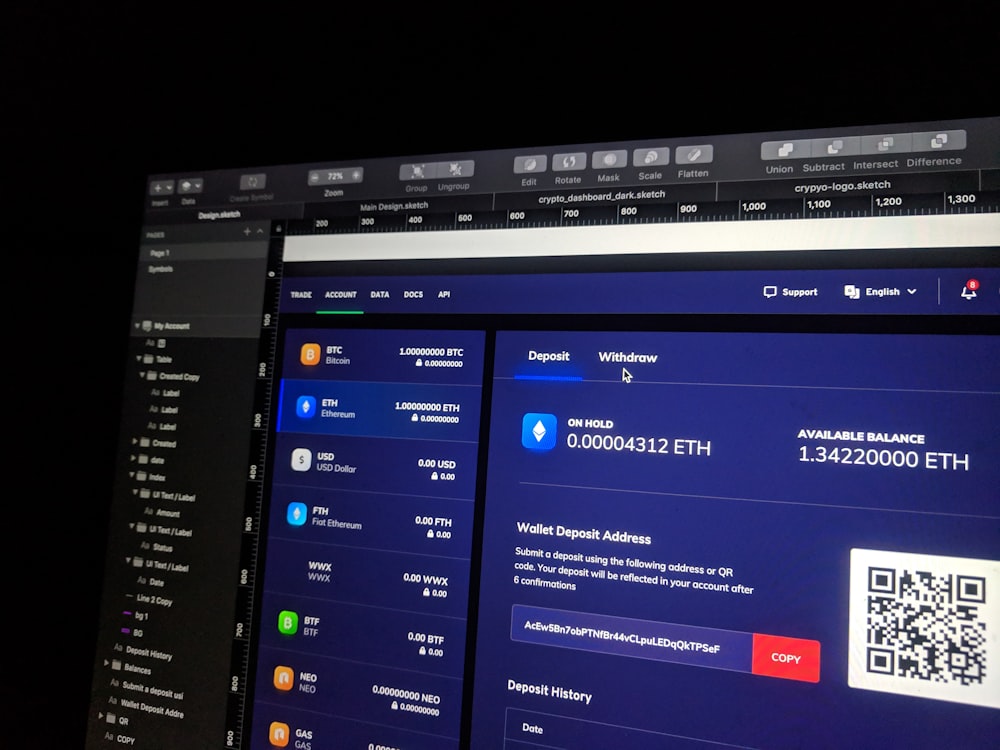Introduction
As design teams scale from 2 to 20+ members, the challenge isn't just managing more designers—it's maintaining consistency, efficiency, and quality across an expanding product ecosystem. Without proper design system architecture, growing teams often find themselves recreating components, struggling with inconsistent user experiences, and spending 40% of their time on repetitive design tasks instead of innovation.

Introduction
As design teams scale from 2 to 20+ members, the challenge isn't just managing more designers—it's maintaining consistency, efficiency, and quality across an expanding product ecosystem. Without proper design system architecture, growing teams often find themselves recreating components, struggling with inconsistent user experiences, and spending 40% of their time on repetitive design tasks instead of innovation.
At Harissa Studio, we've helped over 80 companies build scalable design systems that grow with their teams. The difference between companies that scale smoothly and those that struggle often comes down to how well they architect their design system from day one. This guide will show you how to build a design system architecture that actually scales with your team's growth.
The Scaling Challenge: When Good Design Goes Bad
Common Symptoms of Poor Design System Architecture
Growing design teams face predictable challenges when their design system architecture can't keep pace with expansion:
Design Debt Accumulation:
- Multiple versions of similar components across different projects
- Inconsistent spacing, typography, and color usage
- Designers spending 3-4 hours weekly hunting for "the right component"
- New team members taking 2-3 weeks to become productive
Collaboration Breakdown:
- Conflicting design decisions across different product areas
- Lack of clarity on component ownership and maintenance
- Difficulty maintaining design quality as team velocity increases
- Disconnect between design system and actual implementation
The Cost of Poor Architecture
Our research across 50+ scaling companies reveals the hidden costs of inadequate design system architecture:
- Design Efficiency Loss: 35-50% of design time spent on component recreation
- Quality Inconsistency: 60% more usability issues in products without proper systems
- Onboarding Overhead: 3x longer time-to-productivity for new designers
- Technical Debt: 40% more development time spent on design-related revisions
Foundations: Building Your Design System Architecture
The Atomic Design Methodology
Successful scalable design systems are built on clear hierarchical principles. We use a modified atomic design approach that works specifically for growing teams:
Level 1: Design Tokens
🎯 Foundation Layer
├── Colors (Primary, Secondary, Semantic, Neutral)
├── Typography (Font families, sizes, weights, line heights)
├── Spacing (8px grid system with consistent ratios)
├── Elevation (Shadow and depth systems)
└── Motion (Duration, easing, transition patterns)
Level 2: Base Components
🧩 Component Layer
├── Form Elements (Input, Button, Checkbox, Radio)
├── Navigation (Menu, Breadcrumb, Pagination)
├── Feedback (Alert, Toast, Modal, Tooltip)
└── Data Display (Table, List, Card, Badge)
Level 3: Composite Components
🏗️ Pattern Layer
├── Forms (Login, Registration, Contact)
├── Navigation (Header, Sidebar, Footer)
├── Content (Article, Product listing, Dashboard)
└── Layouts (Page templates, Grid systems)
Component Documentation Strategy
Documentation is where most design systems fail at scale. Our approach focuses on practical, actionable documentation:
Essential Documentation Elements:
- Usage Guidelines: When to use each component and when not to
- Anatomy Breakdown: Visual breakdown of component structure
- Behavior Specifications: How components respond to different states
- Accessibility Requirements: WCAG compliance guidelines and testing methods
- Implementation Notes: Technical considerations for developers
Governance: Managing Design System Evolution
Establishing Clear Ownership
As teams grow, design system ownership becomes critical. We recommend a tiered ownership model:
System Stewards (1-2 people):
- Overall architecture decisions and long-term vision
- Cross-team coordination and conflict resolution
- Quality standards enforcement
- System evolution planning
Component Owners (by domain):
- Specific component maintenance and updates
- Usage pattern analysis and optimization
- User feedback collection and implementation
- Domain-specific customization decisions
Contributors (all designers):
- Bug reporting and improvement suggestions
- New component proposals
- System adherence in daily work
- Knowledge sharing and best practice development
Change Management Process
Successful design systems need structured processes for evolution:
Component Addition Process:
- Proposal Phase: RFC (Request for Comments) with use case documentation
- Design Phase: Component design with stakeholder review
- Validation Phase: Testing with real projects and user feedback
- Implementation Phase: Development, documentation, and rollout
- Adoption Phase: Team training and migration support
Tools and Technology Architecture
Design Tool Integration
Your tool choice significantly impacts how well your system scales:
Figma-Based Architecture (Recommended):
- Master Library: Single source of truth for all components
- Team Libraries: Domain-specific extensions of master library
- Project Templates: Pre-configured starting points for new projects
- Plugin Ecosystem: Custom tools for system maintenance and compliance
Integration Points:
- Design tokens synchronized with development environment
- Automated component usage tracking and analytics
- Version control integration for design system changes
- Automated documentation generation from design files
Developer Handoff Strategy
The design-to-development handoff is where many systems break down at scale:
Code Generation Approach:
- Design tokens exported as CSS variables, JSON, or platform-specific formats
- Component specifications automatically generated from design files
- Style guide integration with component library documentation
- Automated visual regression testing for component changes
Case Study: Scaling Design System for 50+ Person Team
Client Challenge
Company: B2B SaaS platform with multiple product lines
Team Size: Growth from 8 to 52 designers over 18 months
Challenge: Maintain design consistency across 6 different product areas
Initial State Assessment
Problems Identified:
- 14 different button variations across products
- No consistent spacing or typography system
- Designers recreating components 3-4 times weekly
- 4-week onboarding time for new designers
- 30% of development time spent on design inconsistency fixes
Our Architecture Solution
Phase 1: Foundation Building (6 weeks)
- Audit existing components across all products
- Establish design token system with mathematical ratios
- Create master component library with comprehensive documentation
- Implement governance structure and ownership model
Phase 2: Migration and Training (8 weeks)
- Migrate existing projects to new system components
- Train all designers on system usage and contribution processes
- Establish automated compliance checking and reporting
- Create integration between design system and development workflow
Phase 3: Optimization and Scale (Ongoing)
- Monitor system usage and identify improvement opportunities
- Expand system to cover new product areas and use cases
- Integrate user research insights into component evolution
- Develop advanced tooling for system maintenance and governance
Results After 12 Months
Efficiency Gains:
- Design Speed: 65% faster design-to-prototype cycles
- Consistency: 90% reduction in cross-product design inconsistencies
- Onboarding: New designer productivity achieved in 3 days vs 4 weeks
- Development: 45% reduction in design-related development revisions
Quality Improvements:
- User Experience: 40% improvement in usability testing scores
- Accessibility: 100% WCAG AA compliance across all components
- Performance: 25% improvement in product load times through optimized components
- Brand Consistency: Unified experience across all product touchpoints
Advanced Scaling Strategies
Multi-Brand System Architecture
For companies managing multiple brands or products:
Shared Foundation Layer:
- Common interaction patterns and usability principles
- Shared technical implementation and performance optimizations
- Consistent accessibility standards and testing methods
- Base component behaviors and state management
Brand-Specific Expression Layer:
- Visual styling (colors, typography, imagery)
- Brand-specific component variations
- Custom animations and micro-interactions
- Unique layout patterns and spatial systems
International and Localization Considerations
Design systems for global products need additional architecture considerations:
- Text Expansion: Component designs that accommodate 30-40% text length variations
- Reading Patterns: RTL (right-to-left) language support in component structure
- Cultural Adaptations: Color, imagery, and interaction pattern variations
- Technical Integration: Internationalization (i18n) considerations in component development
Measuring Success: KPIs for Design System Architecture
Efficiency Metrics
Track these metrics to measure design system success:
Design Team Metrics:
- Time to First Design: How quickly new projects reach initial design
- Component Reuse Rate: Percentage of designs using system components
- Design Consistency Score: Automated measurement of system adherence
- Onboarding Time: Time for new designers to become productive
Development Team Metrics:
- Design-to-Code Time: Speed of implementation from design handoff
- Revision Cycles: Number of design-related iteration rounds
- Bug Rate: UI-related bugs per release cycle
- Component Coverage: Percentage of UI built with system components
Business Impact Metrics
Product Quality:
- User experience consistency scores across products
- Accessibility compliance rates and testing results
- Performance improvements from optimized components
- Customer satisfaction scores related to product usability
Team Productivity:
- Design team output velocity and quality metrics
- Reduced time-to-market for new features and products
- Decreased design-related project delays and scope changes
- Improved cross-team collaboration and communication efficiency
Common Pitfalls and How to Avoid Them
Over-Engineering the System
Problem: Creating components for every possible use case before they're needed
Solution: Start minimal, expand based on actual usage patterns and team needs
Lack of Adoption Strategy
Problem: Building a perfect system that nobody uses
Solution: Involve the team in creation process and provide migration support
Rigid Governance
Problem: Making the system so restrictive that it stifles creativity
Solution: Balance consistency with flexibility, allow for approved exceptions
Documentation Neglect
Problem: Components without clear usage guidelines and examples
Solution: Make documentation part of the component creation process
Future-Proofing Your Design System
Emerging Trends and Technologies
Prepare your design system architecture for future developments:
- AI-Assisted Design: Integration points for automated design suggestions
- Advanced Prototyping: Support for voice, gesture, and AR/VR interfaces
- Dynamic Personalization: Component systems that adapt to user preferences
- Real-time Collaboration: Architecture supporting simultaneous multi-user editing
Scalability Planning
Design your system architecture with growth in mind:
- Team Growth: Governance models that scale from 10 to 100+ designers
- Product Expansion: Component architectures supporting diverse product needs
- Technical Evolution: Migration strategies for platform and tool changes
- Global Expansion: Internationalization and localization scalability
Conclusion: Building Systems That Grow With You
Successful design system architecture isn't about creating the perfect system from day one—it's about building a foundation that can evolve intelligently as your team and products grow. The companies that scale most successfully are those that invest in design system architecture early, before the pain of inconsistency becomes overwhelming.
The key principles that make design systems scale are the same ones that make any system successful: clear structure, defined ownership, documented processes, and continuous evolution based on real user needs. By following the architectural principles and governance strategies outlined in this guide, you'll build a design system that becomes a competitive advantage rather than a constraint.
Ready to build a scalable design system for your growing team? At Harissa Studio, we specialize in helping companies architect design systems that scale from startup to enterprise. Our proven methodology has helped 80+ companies build systems that grow with their teams while maintaining quality and consistency. Contact us to discuss how we can help you build a design system architecture that supports your growth ambitions.
Subscribe to our newsletter
Lorem ipsum dolor sit amet, consectetur adipiscing elit. Suspendisse varius enim in eros elementum tristique.





